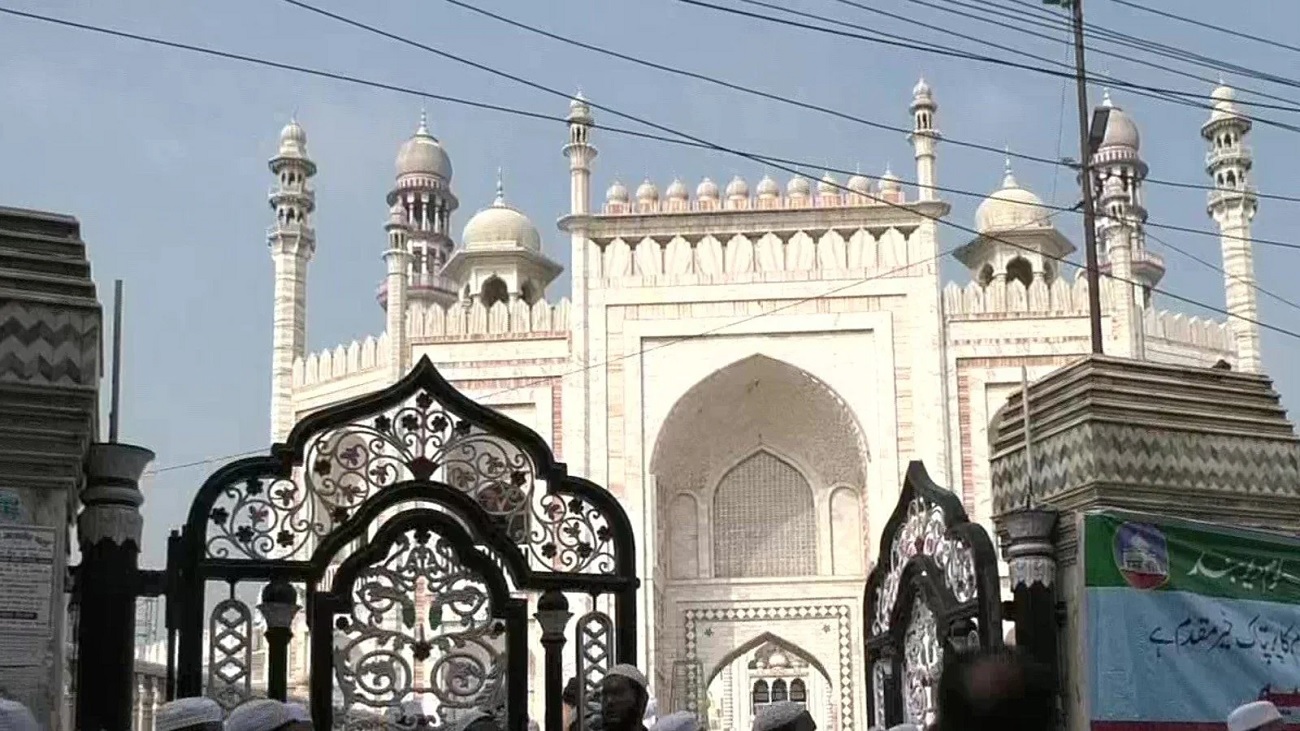 Representation Image
Representation Image
Darul Uloom Deobandh, an Islamic seminary, is all set to hold a seminar to discuss madrasa education. At least 4,000 madrasas across India are affiliated with the Darul Uloom. The seminar will see representatives from Kul Hind Rabta e Madaris e Islamia, the largest madrasa management body.
The seminary’s Vice Chancellor Abul Qasim Nomani told the Times of India that the body was constituted to “improve the education system of madrasas and solve its problems” and that “necessary steps will be taken to discuss the education system and its problems.”
Meanwhile, Darul Uloom’s spokesperson Ashraf Usmani told the publication that the purpose of the seminar was to “discuss education quality provided by madrasas in the country.” The publication also quoted an unnamed employee as saying that a discussion on modernisation of madrasa education was also on the agenda.
This is significant in light of the increased demand for modernising the syllabus of madrasas that in popular perception are just schools that offer religious education. Darul Uloom is headquartered in Deobandh in Uttar Pradesh, a state where a survey of madrasas is ongoing. It was in connection with this survey that the Jamiat e Ulema Hind had held a meeting in Deobandh itself, a few weeks ago.
A brief history of madrasas
In his 2016 paper titled Modern Education in Madrasas: A Perspective Study of Darul Uloom Deobandh, that appeared in the Asia Pacific Journal of Research, Dr. Asjad Ansari explains the genesis of the madrasa system. “Madrasah is an Arabic word which simply means a place of learning. Madrasa as an educational institution is the result of historical evolution having its roots and origin in Madina at Ashaab-e-Suffa, a pavement, near Prophet’s Mosque, where Prophet Muhammed used to disseminate religious knowledge to his companions,” writes Dr. Ansari. He further explains, “The history of madrasa education in India is spread over more than a thousand years. Initially, madrasa education system came with the Arab settlers who came with Malik Ibn-e-Deenar and settled in the western coast of Kerala.”
Dr. Ansari goes on to say, “Post-independent India witnessed the emergence of huge number of madrasas being established by different sections of Muslim society. These sections were representing different schools of thought and so were the madrasas established by them. Madrasas became the centres of higher learning for the concerned ideology and school of thought. Naturally, the syllabus adopted by them was to cater their ideological notions and produce such scholars who become their ambassadors and propagate their ideology.”
Madrasa modernisation in India
According to the Ministry of Minority Affairs (MoMA), there are over 24,000 madrasas in India. The Government of India launched two programs for madrasa modernisation – Modernization of Madrasa Schemes (MOMS) and Scheme for Providing Quality Education in Madrasas (SPQEM) to introduce modern subjects in Madrasa education to bring Madrasa graduates at par with the graduates of public institutions.
A 2018 report by SPQEM cited a 2005 study by MK Qasmi to explain the curriculum taught at Indian madrasas. It said, “The Curriculum of Madrasas in India is regulated by three major Islamic institutions, namely, Darul Uloom Deoband, Darul Uloom Nadwatul Ulama Lucknow and Jamiatul Hidaya Jaipur. Darul Uloom covers syllabus for four stages like, primary, middle, high school and specialization. It includes subjects like Urdu, Persian, Hindi, English, Mathematics, Geography, Arabic Grammar and Composition in its curriculum. Darul Uloom Nadwatul Ulama Lucknow covers the complete primary education as prescribed for general schools besides giving a sound religious base to its students. Jamiatul Hidaya Jaipur begins at the upper primary stage i.e. from class VI and continues for a period of nine years divided into two levels of Sanwi and Aali.it includes Hindi, English, Social Sciences and intensive technical training in its syllabus besides Islamiyat.”
The SPQEM report also points out how madrasas suffered due to inefficient methods of recruitment for teachers. It says, “In all states, the recruitment and appointment of teachers is an internal affair, as Madrasas follow their own procedure to identify, select and appoint teachers. The teachers are recruited mainly through the Madrasa Management Committee (MMC). In most of the cases, MMCs do not follow the advertised procedure in filling up the vacant positions of teachers. The common practice is to put notice on the notice board of the Madrasa/Masjid. In some cases, announcement is made in the Friday prayer for the vacant positions.”
But most disturbingly, the report found, “Presently there is hardly any prescribed format for the curriculum to be taught in the Madrasa. Therefore, the curriculum is mainly guided by the Islamic law in addition to the prescribed textbooks from the state education board.”
This brings us back to the longstanding demand for modernisation of madrasa curriculum. There is a need to teach subjects like physics, chemistry, biology, mathematics, computer science, economics and languages other than just Urdu, Persian or Arabic. The ultimate objective of school education is to empower the student with a variety of career options in the real world, as well as hone their communication and critical thinking skills.
Related:
AICTE recognises ‘Vedic Board’ qualifications allegedly without scrutinising syllabus
Cooperate fully with madrasa survey authorities: Maulana Arshad Madani to UP madrasas
Discrepancy in reason for Madrasa demolished in Kabaitary: AAMSU